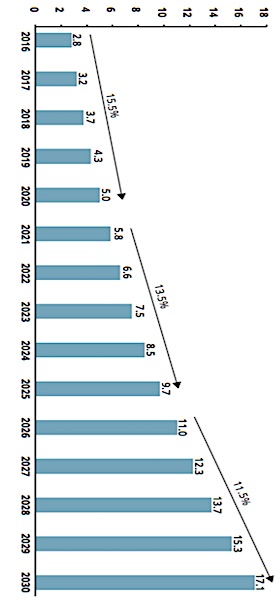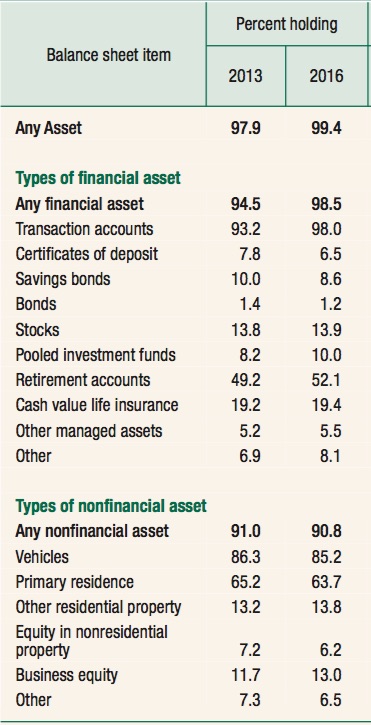
With last month’s introduction of RetireUp Pro, the latest iteration of the popular RetireUp income planning software, the broker-dealer world got a chance to see what the five-year-old fintech company did with its equity infusion from Annexus Ventures last year.
RetireUp Pro appears to be broader, deeper, and more tilted toward selling fixed indexed annuities (FIAs) than “classic” RetireUp. Where the original software focused on income planning, the newest version is designed to maximize efficiency, help advisors meet DOL fiduciary standards and drive more insurance product transactions.
It does that by upgrading the original RetireUp and merging it with RepPro, a platform that provides the pre-filled forms that advisors and producers need for “straight-through-processing of annuity purchases. The resulting “end to end” solution spans the advice-and-sales process, squeezing out time-wasters, guard-railing potential fiduciary violations and scrubbing out the typos that generate NIGO (not in good order) rejections from carriers.
RetireUp Pro is designed to bridge many worlds: human and robo-advice, the investment and insurance product silos, the accumulation and decumulation planning stages, the advice process and the sales process, and the front-office and middle-office. It’s a tall order, but, then, that’s what the times demand.
The most intriguing aspect of this story, for retirement industry watchers, may be the role of Annexus, the Arizona-based indexed annuity design and distribution firm. Annexus is already the “Intel Inside” for leading indexed insurance products and oversees distribution of indexed insurance products. With RetireUp Pro, it now has its own “end to end” play in the annuity marketplace.
A bit of history
Since Annexus Ventures bought into RetireUp in December 2016 with a reported eight-figure investment, the firm’s original product has changed considerably. The original RetireUp was created in 2012 and led by a bootstrapped, Chicago-area group of entrepreneurs that included co-founder Dan Santner, a songwriter-software architect, Michael Roth, a young derivatives trader, and operations chief Brian Bossler.
RetireUp focused on retirement income planning, not the accumulation stage leading up to retirement or the post-planning annuity sales process. “We saw a missing niche,” Roth (right) told RIJ recently. “Advisors were saying to clients, ‘Here’s the annual return of this model or this model,’ but for clients the fundamental question was, ‘Will I outlive my income?’”
A core innovation of the original RetireUp lives on in RetireUp Pro: A screen-view where users see a round (virtual) dial with a number in the middle and a green edge partially encircling the rim. The number indicates the percentage of a retiree’s income that will come from guaranteed sources like Social Security, pensions and annuities (especially variable annuities, when VAs still dominated annuity brokerage sales). When the percentage is zero, no green can be seen. When the number reaches 100%, a bright green circle surrounds it. RetireUp calls the feature an “Income Stability Ratio.”
“On the old system, income stability was the focus of the plan,” Roth said. “That’s what we decided to emphasize.” Investment-oriented software, by contrast, emphasized the Monte Carlo-based probability that, given a specific asset allocation, a clients’ money would last as long as they lived. “RetireUp was born out of that [feature]. We made it prominent on purpose.”
In early 2016, some RetireUp users asked if a sales component could be added to the product. Those requests became more urgent as the June 9 enactment of the Department of Labor’s fiduciary rule approached. The rule requires advisors who want to sell indexed or variable annuities on commission to provide evidence—an audit trail—that their sales recommendations to IRA clients were in the client’s “best interest.”
“About 18 months ago, people started asking, ‘Can we stay on the same platform and go into sales mode?’” Roth said. “And then DOL happened. The regulation has galvanized us and motivated us to act faster. By then the writing was on the wall that we’re in an increasingly regulated environment.” RetireUp also adapted to the changing annuity market by preloading data on Great American and Allianz Life FIAs.
Annexation
By then, RetireUp had been noticed by Scottsdale, AZ-based Annexus Ventures, a fin-tech incubator fund. Among its backers are Ron Shurts and Don Dady, who started Annexus in 2006. Annexus was a designer of the algorithms in FIAs such as the Nationwide New Heights and Athene BCA Elevate and others. Annexus also distributes indexed insurance products through 19 insurance marketing organizations.
Annexus and Annexus Ventures are closely tied. Jim Richards, chief strategy officer of Annexus and managing partner of Annexus Ventures, is on the board of both RetireUp and RepPro. He told RIJ that Annexus looked at RetireUp and a digital forms and order-entry provider, RepPro, and saw synergies.
 “We funded RepPro, which does straight-through processing, and we backed RetireUp, a well-established and respected income planning tool,” Richards (left) said. “In light of the DOL rule, we saw the sense of merging the two. Now we can capture the ‘what if’ scenarios, and get all the data automatically into a data archive package.
“We funded RepPro, which does straight-through processing, and we backed RetireUp, a well-established and respected income planning tool,” Richards (left) said. “In light of the DOL rule, we saw the sense of merging the two. Now we can capture the ‘what if’ scenarios, and get all the data automatically into a data archive package.
“At the same time we built out a risk assessment and brought in portfolio models. We can show them how they are allocated today and where they fall in terms of their risk profile. From there, we can suggest alternative assets such as FIAs and REITs.
“We also built a supervisory platform—that’s the other piece. The financial institution gets to review all of the key components of their advisors’ plans. We roll up all of the data into a dashboard. It goes into a supervisory review queue either at that institution or the custodian or the insurance carrier,” Richards told RIJ.
Starting in early 2017, VALIC began white-labeling a customized version of RetireUp for about a thousand annuity producers, reportedly with great effect, and work continued on the new design. RetireUp Pro appears to be built primarily for annuity sales, especially indexed annuity sales.
Richards noted that IMOs now get more than half of their FIA sales order through registered reps, a target market for the software. Given the strengths and history of Annexus, the investment in RetireUp and RepPro certainly looks like an attempt to vertically integrate the manufacture and distribution of indexed annuities and capitalize their growing use by advisors at brokerages or hybrid RIAs.
Roth and Richards like to emphasize a broader strategy. “The mission of company is to be agnostic to the product type,” Richards said. “We’re seeing the emergence of new types of product classes in the annuity space. We see product development in the fee-based space. We’re seeing further development of indexed variable annuities. I would expect to see SPIAs on the platform in the future.” (Where RetireUp focused on modeling FIAs with income riders, RetireUp Pro models accumulation-only FIAs as well.)
‘The money will follow’
RetireUp Pro costs $149 a month or $999 a year at the individual level, according to the RetireUp website. The per-user cost for enterprises would be much lower. The product features are listed as: Demo Walkthrough, Create Presentations, Income Stability Ratio, CRM Integrations, Income Planning, Accumulation Planning, Fact Finder, Risk Value, Generate Forms, and Multiple-User Syncing and Roles Permissions.
RetireUp Pro is clearly designed to squeeze as much of the inefficiency out of the retirement planning and annuity sales process as possible. Downward pressure on fees means that advisors need tools that can help them handle more clients, reduce the time they have to spend with each client, and maximize their productivity.
More than 50 independent broker-dealers and some 3,000 advisors are currently using RetireUp. Data on FIAs, including both fee-based and commission-based products, from Allianz Life, American Equity, Athene, Global Atlantic, and Great American are now or will be pre-loaded on the platform, with more to come.
Barring the possibility that Boomers will use pure robo-advice for do-it-yourself retirement planning and annuity purchases, RetireUp Pro represents something close to the future of successful, DOL-compliant hybrid digital advice that involves both humans and algorithms. Its tilt toward indexed products makes it less than truly agnostic, but agnosticism is a luxury enjoyed mainly by pure planners, not broker-dealer advisors.
Nonetheless, it’s a step forward from the days when clients didn’t get to participate much in the income-planning or product-selection process at all. “If we build trust and transparency, the money will follow,” Roth told RIJ. “You have about one third of advisors who are successful, and you have a bottom third who don’t have any process at all. They aren’t adding value to client. Then you have what I call the motivated middle. We want to help them add value, and efficiency and help get them to the top third.”
© 2017 RIJ Publishing LLC.














